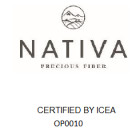The driest desert on earth is found in South America, between southern Peru and northern Chile.
Atacama, the place whose annual precipitation does not exceed 2.1mm of rain, is a narrow strip of land, embraced by the Andes, where the constant state of high pressure prevents the formation of clouds.
The strong temperature variations between day and night (from 40 degrees during the day to 5 degrees at night) and reliefs with an altitude of about 2000 meters, make Atacama a unique desert in the world; the uniqueness of this geographical area is accentuated, every six / seven years, by a carpet of purple and white flowers, which extends over a very large surface, and lasts for about three months (September-December). El Nino, in fact, the wind that blows on the Andean territory, brings the little rain necessary for the flowering of the "Roses of Atacama" that make this place the "flowered desert".
The blooming of the desert, now reduced to leopard spots, less persistent and increasingly rare, is threatened not only by climate change, but also by the environmental cost of fashion. The Atacama Desert, so arid and so little like living conditions human, it has in fact become the largest open-air waste dump in the fashion world; waste which, for Italy alone, represents approximately 240,000 tons equal to 36 million euros.
It is estimated, in fact, on a European basis, that the consumption of clothes, accessories and textile products is around 10 kg per capita; with a targeted collection, almost 5 kg per capita per year of textile waste could be recovered, instead of sending it to the other side of the world and making garbage such a rare and spectacular environmental heritage. Furthermore, 1 kg of used clothing reduces carbon dioxide emissions by 3.6 kg, water consumption by 6,000 liters, 0.3 kg of fertilizers and 0.2 kg of pesticides.
To reduce the environmental impact of our waste, however, it is necessary to set up a coherent supply chain from separate collection to sorting (selection of garments by fibrous type, separation of accessories such as buttons, buckles), from fraying of fabrics to subsequent operations necessary to reduce materials. post-consumer in fibers or re-spun polymers.
Let us remember that the textile fraction of our domestic and non-domestic waste can be differentiated: CONAU, the National Consortium of Used Clothes, collects discarded clothes for recycling, a practice that is still little known and little publicized in Italy (the percentage of clothes collected in Italy is 0.22%) but which will become mandatory by 2050.
In the Atacama Desert, the gigantic sculpture of the Chilean artist Mario Irarrázabal emerges, a human hand expressing a desperate, unheard call for help. When we discard an item of clothing, let's take the time to dispose of it correctly, let's find out about the methods and collection points (whether for recycling or humanitarian aid): our superficial choice can create important consequences thousands of kilometers from us .

















